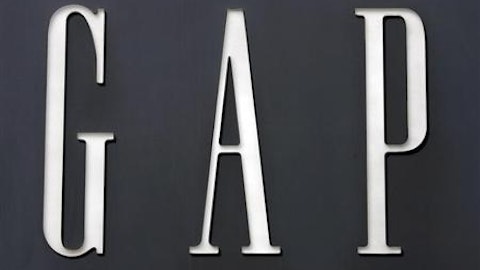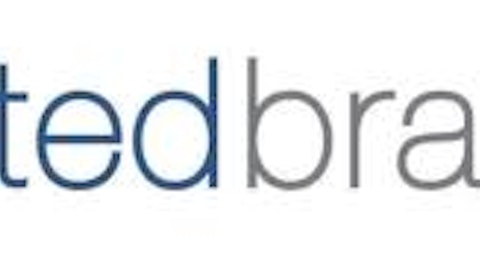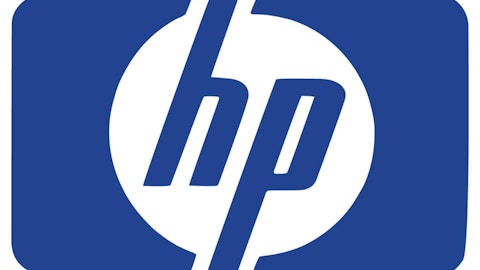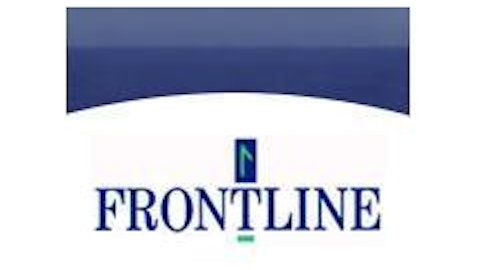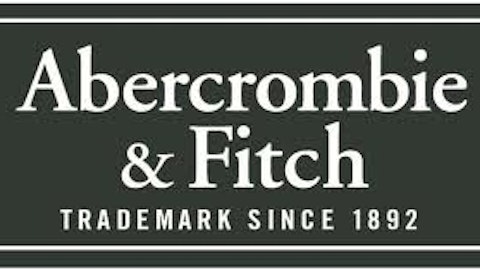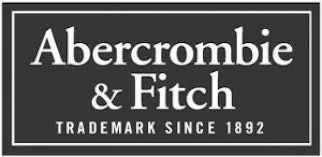
A Mixed Fourth Quarter
For its fourth quarter, Abercrombie earned $1.95 per share, or $157.2 million, which was a major improvement from the 52 cents per share, or $45.8 million, it posted the previous year. The prior year quarter’s earnings were impacted by a 50 cent charge on impairment charges and other one-time expenses. Adjusting for similar charges this quarter, Abercrombie’s earnings came in at $2.21 per share, beating the Thomson Reuters’ analyst estimate of $1.96 per share on the same basis.
Abercrombie’s revenue rose 11% to $1.47 billion, missing the average forecast of $1.49 billion.
Same-Store Sales Growth
Abercrombie’s same-store sales dropped 14% internationally and declined 1% in the United States. To put that into perspective, The Gap Inc. (NYSE:GPS) reported an international same-store sales decline of 2%, while U.S. same-store sales rose 4% at Gap, 3% at Banana Republic and 8% at Old Navy – its three primary brands.
Same-store sales at Abercrombie & Fitch Co. (NYSE:ANF)’s namesake stores were flat globally, while its Hollister brand posted a 2% decline. Abercrombie Kids was a bright spot, posting 4% growth. Its e-commerce business and direct-to-consumer sales rose 5% in the United States and 52% internationally.
Looking forward…
Although Abercrombie’s fourth quarter earnings were mixed, it was its bleak guidance for fiscal 2013 that sunk the stock. For 2013, Abercrombie expects to earn $3.35 to $3.45 per share, missing the analyst estimate of $3.67 per share. It also expects a “high single-digit” decline in same-store sales during its fourth quarter, which it attributed to a lack of clearance inventory.
While the company also plans to shut down 40 to 50 stores in the United States throughout 2013, it plans to open namesake flagship stores in Seoul and Shanghai, as well as approximately 20 Hollister stores overseas, including its first location in the Middle East.
Revisiting its operating model
Although Abercrombie’s gross margin grew from 59.5% to 63.4%, due to decreased discounts and lower average unit cost, its operating margin has consistently declined over the past three years.
ANF Operating Margin TTM data by YCharts
Abercrombie’s rivals American Eagle Outfitters (NYSE:AEO), Aeropostale, Inc. (NYSE:ARO) and Gap have also faced similar declines.
However, a rise in gross margin and decline in operating margin is indicative of lost profits due to operating inefficiencies.
This has prompted CEO Michael Jeffries to set up special teams led by senior executives to examine the company’s operating model to find and eliminate redundancies and inefficiencies, with the primary goal of simplifying its model and reducing expenses. By reducing these costs, the company hopes to be able to raise prices again to recover bring its operating margin back into the low teens over the next couple of years.
Abercrombie has also hired an outside consulting firm to aid in its effort, highlighting the seriousness of this problem. “Our profitability is not where it needs to be,” Jeffries told analysts on a conference call. The company is also conducting market surveys to better understand its customers’ tastes and competitors.
In my opinion, Jeffries’ strategy is clearly flawed. When your company’s same-store sales are declining both domestically and internationally, is it really a good time to raise prices?
Abercrombie, which faces strong competition from H&M Company, Inc., Forever 21, Inc., Aeropostale, American Eagle Outfitters and Gap’s Banana Republic, simply doesn’t have that kind of pricing power. UBS analyst Roxanne Meyer voiced concerns, stating, “Higher prices internationally won’t be well received.”
Fresher fashions?
Abercrombie has been attempting to break a streak of quarterly same-store declines by offering new fashions beyond its logo-driven apparel, which have waned in popularity over the past year. H&M and Forever 21 notably refresh their products at a much faster pace than Abercrombie. In response, it has also offered new merchandise more frequently. Abercrombie also started loyalty-club programs in a bid to attract more return customers.
Versus Competitors
Just how does Abercrombie fare fundamentally against its primary publicly traded rivals – Gap, Aeropostale and American Eagle Outfitters?
| Forward P/E | Price to Sales (ttm) | Debt to Equity | Return on Equity (ttm) | Profit Margin | Same-store Sales Growth (most recent qtr.) | |
| Abercrombie & Fitch | 11.49 | 0.81 | 3.60 | 14.47% | 5.84% | +1% |
| Gap | 11.69 | 1.01 | 43.06 | 40.18% | 7.25% | +5% |
| Aeropostale | 15.71 | 0.42 | No debt | 15.60% | 2.57% | -10% |
| American Eagle Outfitters | 14.22 | 1.25 | No debt | 15.46% | 5.50% | +5% |
| Best Value | Abercrombie | Aeropostale | Aeropostale/American Eagle | Gap | Gap | Gap/American Eagle |
Source: Yahoo Finance, Quarterly Reports
While Aeropostale and Abercrombie can be considered fundamentally cheaper, Gap and American Eagle exhibit far stronger same-store sales. Although Abercrombie’s revenue growth over the past three years has remianed steady, a look at its lack of bottom line growth reveals Abercrombie’s true weakness.
The Foolish Bottom Line
Investors should avoid Abercrombie & Fitch Co. (NYSE:ANF). The company’s same-store sales are still weak and its turnaround strategy is questionable. Although cleaning up inefficiencies may tighten up its operating margins, Abercrombie simply lacks the pricing power and appeal to steal market share from its rivals. Expanding aggressively overseas while closing down domestic ones could also be reckless, considering the company’s nasty international same-store sales decline during the fourth quarter.
Abercrombie is betting that pent up demand, seen in its strong e-commerce and direct-to-consumer sales in international markets, could translate well to strategically located brick-and-mortar stores. However, I firmly believe that the worst may still be to come for the beleaguered retailer, as it loses its identity in an increasingly crowded marketplace.
The article This Retailer May Be Doomed in 2013 originally appeared on Fool.com and is written by Leo Sun.
Copyright © 1995 – 2013 The Motley Fool, LLC. All rights reserved. The Motley Fool has a disclosure policy.



